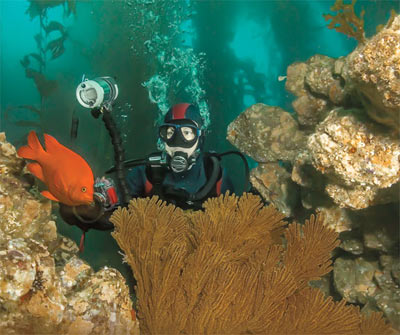The buddy system is something that is pounded into all basic scuba course students. “Never dive alone,” is the mantra for instructors teaching diving safety. But is the buddy system all it is really cracked up to be? While I support it, I want to say right up front it is way overrated. It is time for a reality check on the buddy system.
Your dive buddy is not your own personal rescue diver, nor are you theirs. You are to be a totally self-reliant diver, almost as if you are diving solo. What the dive buddy is to be is your 1) companion in enjoyment of the dive and 2) your final solution of a backup of a backup. Your buddy should not be your primary backup but only a secondary or even tertiary backup.
Here are the problems: Even with a good buddy system, your buddy may be out of reach when help is needed immediately — you suddenly lose your breathing gas supply, you lose your weight belt at depth, etc. In these incidences you need to have strategies, gear and procedures for self-rescue. And you need to practice these self-rescue techniques in a water environment.
You cannot immediately assume you are “safe” just because you are diving with a buddy. You need to know how to assemble your own gear and do it. You are ultimately responsible for checking and knowing your gear intimately and how it functions.
So where is a buddy useful? Even though we should check and recheck our own gear, a third check by our buddy is also a good idea for two reasons. First, we are all human and might have missed something. Second, the more familiar your buddy is with your gear, the more likely he or she will be able to help should a problem arise.
Although you should be a self-reliant diver, still take time to make the buddy system work to its maximum potential. As previously mentioned, know each other’s gear well. Know each other’s back up breathing gas system. Know how to dump weights, inflate BCs, tighten tank straps, fix fin straps and more. To be a good buddy you could be called upon to help out in any number of ways. This is not only for safety but also sometimes just simply for the comfort and ease of the dive. And make sure your buddy knows your gear.
And finally, agree upon dive procedures and plans. Go over simple but important hand signals. Review emergency procedures including a lost buddy plan. Consider when and how to draw the dive to a close with details on when to turn around and head back, air consumption, and safety stops. You should also include discussing fun stuff like what you’d like to see and photograph. Can your buddy pose for you for a photo? Are you hunting seafood? If so, what?
Look at your buddy in the right way and you will have a much more safe and enjoyable dive.










